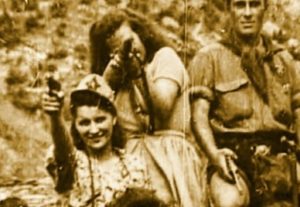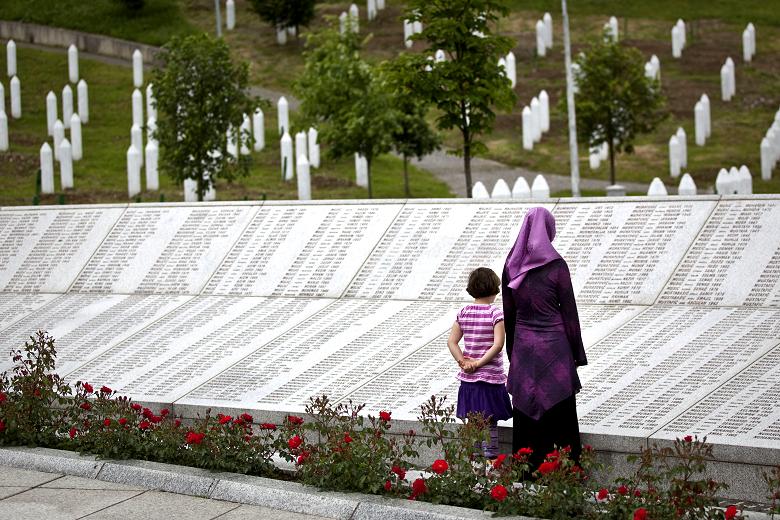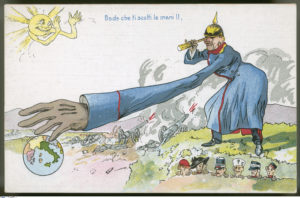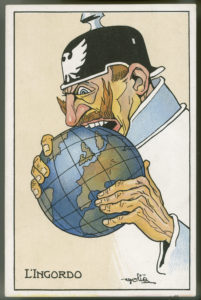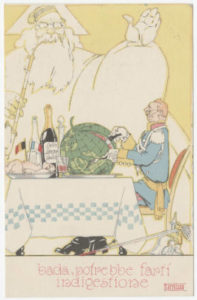In this post, Ana Antic probes further into the widely quoted anti-immigration discourses in Eastern Europe, and identifies striking connections with those in the West.
****
As Syrian, Iraqi, Afghani and other Middle Eastern refugees struggled to make their way to Europe this spring and summer, the European Union first greeted them with silence, and then, in September, the world was universally appalled by the images coming from Eastern Europe: the self-proclaimed (or aspiring) borderlands of the European Union mobilized state and police power to prevent the transit of refugees to Germany or Scandinavia. Hungary’s border fence, only an ominous idea back in June, came to life in a string of violent incidents, in which the Hungarian police (and, strikingly, one journalist) were pitted against unarmed men, women and children who attempted to enter the country from Serbia. Hungary’s PM memorably opined that ‘Hungary is a country with a 1000-year-old Christian culture. We Hungarians don’t want the global-sized movement of people to change Hungary.’ But there was more at stake than only Hungary’s Christendom: as the PM of the state positioned on the very border of the EU, Orban took on himself the grandiose responsibility for protecting the entire continent, as he repeatedly stated that Europe’s way of life and ‘culture’ were threatened by the influx of non-European and, even worse, non-Christian refugees.
Bulwark of Christianity?
Orban has been particularly fond of the Christian theme, and remains steadfast in his commitment to ‘keep Europe Christian’, because, reportedly, ‘European identity [has been] rooted in Christianity.’ Slovakian and Polish spokespersons agreed and stated that their countries would only accept Christian refugees, thereby making Muslims explicitly unwelcome and marking them as a security as well as civilizational threat. This, though, is not a recent development: the myth of being antemurale Christianitatis – literally, in front of the ‘walls’ of the castle of Christianity, the last outpost of Europe and ‘defender of its gates’ and its ‘true’ civilization – has been one of the most persistent and significant ones in European and East European national historiographies, and has arguably remained central to national identity production on the borders of the continent. This interpretation of East European historiography rests on the idea of a civilizational and cultural boundary, which different societies defined according to their own needs, and serves to show that the group in question is included in a superior cultural community, and is forced to protect it from other, inferior groups who do not belong.
The myth has had explicitly martyrological and messianic overtones, and suggests that the nation on the borders of a larger community has chosen to sacrifice itself in order to save that broader civilization of which it is a part. But the myth also served as a legitimating mechanism, a way of proving that, say, the Balkan or East European borderlands did in fact belong to the European civilization despite their marginal geographical or political position. And while the ‘dark forces’ that attacked Europe throughout its history have been many – the Ottoman Muslims, the ‘Eastern’ or ‘Asiatic’ Communists, the Orthodox Slavs – they have always been marked as barbarians and infidels. The myth has proven to be remarkably flexible, and can easily accommodate different types of non-Europeans in the late twentieth and early twenty-first centuries. The current reiterations of the need to defend the ‘gates’ and borders in Eastern Europe only show how the ‘new Europeans’ have been imagining themselves in relation to the coveted ‘West.’
Eastern Europe has consequently itself become a target of some very unfavourable recent reviews in European public and academic discourses. In response to what he termed the East European ‘deficit of compassion’, leading Balkan and Bulgarian political scientist and analyst Ivan Krastev wrote that, ‘[d]espite living at the crossroads of Europe and Asia, Russia and the Middle East, many Eastern Europeans are incurious and insular.’ Prominent American-Polish historian and foremost expert on WWII and post-war violence in East Central Europe, Jan Gross, added that, ‘[t]he states known collectively as ‘Eastern Europe,’… have revealed themselves to be intolerant, illiberal, xenophobic, and incapable of remembering the spirit of solidarity that carried them to freedom a quarter-century ago.’ In his piece in Foreign Policy, Paul Hockenos referred to the ‘stunning hypocrisy of Mitteleuropa’, and argued that ‘[i]t seems tolerance and civic values in these countries are less advanced than we assumed. Illiberal values, it seems, have been passed from one generation to the next, and it will take more than the arrival of tens of thousands in need of compassion and succor to change this sad state of affairs.’
The role of the West
The images of brutality and rhetoric of discrimination coming from Eastern Europe seem to justify these harsh words. The discourses of civilizational bulwarks and outposts only work to generate more authoritarian and chauvinistic domestic policies and public opinion, For instance, it’s clear that the Hungarian government’s comprehensive anti-refugee campaign was mainly aimed to please domestic right-wing voters. But what is even more worrying is that this idea of being the outposts and defenders of Europe (or a certain unfortunate concept of Europe) has been directly encouraged by Western Europe and the EU.
The idea of Europe which East European leaders now seem to believe they are defending is a particularly narrow and exclusive one: in addition to ‘Christian values’, it seems to mainly rest on a nebulous concept of ‘Western’ civilizational/cultural standards. But this is pretty much the only one that has ever been put forward to them in practice: it is exactly the kind of exclusionary politics that the EU has long been practicing on its Eastern borders. It’s the kind of disparaging treatment that East European migrant workers are still facing as they move to Western Europe, long after they received their EU passports which gave them unrestricted labour rights anywhere on the EU territory. As Dejan Jovic has argued, instead of democratizing the countries on its borders, the EU has made them even more authoritarian and less liberal: instead of spreading the idea of freedom and cooperation, it has been erecting walls towards Eastern Europe, reinforcing its borders and reintroducing non-liberal policies as it attempted to ‘protect’ itself from those countries and their flawed, authoritarian or unruly characters (remember the EU requests that Serbia ‘prevent’ its Roma population from entering the territory of the European Union and asking for asylum – it remained unclear how the EU officials imagined such screening of the Roma exiting the country to be organised).
This points to one of the main problems with this particular historical discourse of being antemurale: it can cast one and the same group or society in both roles: as defenders as well as ‘barbarians.’ This is the phenomenon that Milica Bakic-Hayden called ‘nesting orientalisms’, and while she mainly wrote about Balkan countries, the term seems to be eerily applicable to the current refugee crisis. While Eastern European countries define and prove their ‘Europeanness’ or Christianness or civilization by distancing themselves culturally from the refugees, they are often frustrated to find themselves identified as ‘not European enough’ by their Western neighbours, and by the EU itself.
The idea that non-Communist ‘Europe’ always represented a set of liberal and humanistic values has remained very influential but rather vague and unsubstantiated throughout the post-Communist period. Moreover, walls have not always remained symbolic: between 2010 and 2012, the EU’s border patrol agency sent teams of policemen from across the Union to guard the Greek border with Turkey against immigrants from Iraq, Afghanistan, and African countries, and a number of other measures were introduced to increase Greece’s border security – including building a fence! – with EU backing.
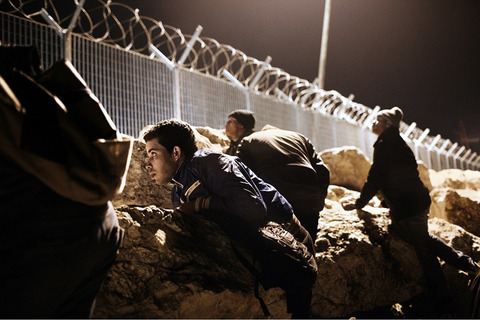
West European states such as Denmark and the UK have actively worked to discourage the influx of refugees and migrants, while the French and British governments remain slow to deal with the inhumane conditions in the Calais makeshift refugee camp. A string of fires in refugee camps and shelters across countries such as Sweden or Germany indicates that the problem is much larger than Eastern Europe’s lingering illiberalism. Just last week, the EU mini-summit in Brussels aimed to come up with agreements and policies to alleviate the mounting refugee crisis, but its conclusions have not moved beyond the same old framework of fences and borders: the European Commission promised more funds for ‘extra border police’ in order to ‘strengthen Schengen’s external borders in Greece and Slovenia.’ Since Orban’s inflammatory statements this summer, both Slovenia and Austria have both partially closed their borders in an attempt to slow down the influx of people into Western Europe. Orban’s rhetoric might be more incendiary than any other EU leaders’ at the moment, but his solutions are ultimately far from controversial, and ‘Fortress Europe’ lives on.
‘Europeanizing’ Eastern Europe
Jan Gross’s article suggested that the Communist period should be viewed as the key to understanding the current ‘compassion deficit’ of Eastern Europe: unlike Germany, ‘Eastern Europe… has yet to come to terms with its murderous past. Only when it does will its people be able to recognize their obligation to save those fleeing in the face of evil.’ In other words, the Communist regimes in the region never honestly addressed the East European societies’ complicity in Nazi crimes, and substituted overly politicized narratives of WWII for such cathartic, German-style ‘dealing with the past.’ Hockenos agrees, adding that, over ten years after most of formerly socialist Eastern Europe joined the EU, ‘we might have expected that some of these communist-era hangovers should have mellowed and disappeared.’ However, calling the East European governments’ extreme unwillingness to welcome the refugees ‘a communist hang-over’ and pinning all the blame for the ‘compassion deficit’ on Communism is hardly productive, as it completely bypasses Europe’s responsibility for encouraging and supporting the idea of raising symbolic and concrete walls on the EU’s borders. While Communist societies’ memory politics left a lot to be desired, it is highly problematic to argue, or imply, that the sole legacy of Communism in Eastern Europe is the culture of illiberalism and intolerance.
Moreover, it was in the anti-Communist dissidents’ proclamations, much hailed by a welcoming West, that some of the most powerful reinforcements of the antemurale myth have been entertained: Milan Kundera’s influential essay ‘The tragedy of Central Europe’, affirmed East Central Europe’s ‘Europeanness’ by stating that it was ‘a piece of Latin West which has fallen under Russian domination’, and that, although it was politically in the East and dominated by ‘Asiatics’ – Russians, it remained ‘culturally in the West.’ Thus, in the 1980s twist of the myth, it was the countries of Central Europe – Hungary, Poland, Czechoslovakia – which defended the true ‘European civilization’ from the non-European barbarians. From that lofty civilizational perspective, there could not be too much difference between Russians and Syrians.
So it was one of the most influential – and brilliant – liberal democratic thinkers of Eastern Europe, a naturalized French intellectual, who popularized the civilizational bulwark discourse in the 1980s, and believed that precisely such discourse could best aid his country’s and region’s inclusion in a European family of nations. Moreover, Kundera was hardly the only one. We are currently seeing the unsavoury consequences of such ruminations. As East and Central European states negotiated their ‘return’ to Europe after 1989, this inclusion rested on re-affirmations of the region’s commitment to the ‘Western’ values and ‘European way of life’ which Orban is now invoking so avidly. In fact, the post-Communist ‘Europeanization’ confirmed and reinforced the image of Eastern Europe as the bulwark, and the symbolic walls were constantly erected and occasionally moved further to the southeast. In that sense, the East European states’ brutal reactions to Middle Eastern refugees might be the sign and the proof of the former Communist region’s ultimate Europeanization.
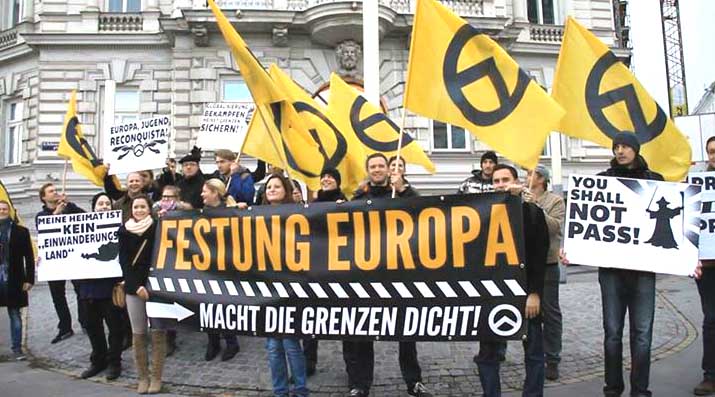
Such interpretations of Eastern Europe unwittingly repeat the antemurale strategy by erecting a conceptual border between East and West and emphasizing Eastern Europe’s continual ‘lagging behind’ the Western standards. This often results in self-congratulatory narratives by authors who praise Western Europe’s supposedly unproblematic commitment to pluralistic and liberal values in contrast to the troubled East. The purpose of the antemurale myth-making has often been to preclude self-reflection and self-criticism by displacing blame and responsibility further to the east or south, and the current public discourse in the West on the East European refugee crisis seems to be doing precisely this. But the influx of refugees and the consequent EU crisis offer an unprecedented opportunity for such self-reflection, primarily in Western Europe. It remains to be seen if that opportunity will be taken, and if the very idea of ‘Fortress Europe’ with its borders, fences and cultural chauvinism will be re-examined.


